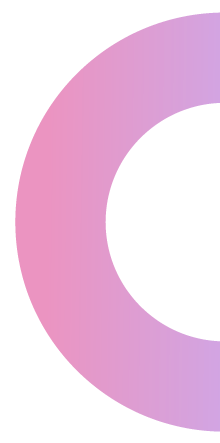Feminine Rhinoplasty
Conveniently located to serve the areas of London and Manchester

Feminine rhinoplasty is a cosmetic procedure that augments the nose to create a more feminine-presenting profile for the patient. There are certain nasal traits that present in a more feminine way to the observer and patient. This surgery often creates a softer, more female-centric nasal shape by smoothing the dorsum (bridge) and reducing the size of the nasal tip. (1)
Dr. Riccardo Frati is a renowned, board-certified plastic surgeon practising in London and the surrounding areas. He is extensively trained and experienced in all concentrations of cosmetic surgery of the face, breast, and body. Dr. Frati takes great pride in providing comprehensive care for his patients from the UK and around the world. At Harley Surgery, he offers private consultations for his surgical patients to formally discuss their cosmetic concerns.
To schedule an appointment with Dr. Frati, please fill out our contact form. You may also contact us by calling our London locations at +44 20 3633 2619, or reach our Manchester office at +44 16 1327 2139 to get started.
Contents
- 1 What is a Feminine Nasal Shape?
- 2 How Can I Benefit From Feminine Rhinoplasty?
- 3 Ideal Feminine Rhinoplasty Candidates
- 4 Personal Consultation with Dr. Frati
- 5 Preparation
- 6 Feminine Rhinoplasty Procedure
- 7 Recovery
- 8 Feminine Rhinoplasty Results
- 9 How Much Does Feminine Rhinoplasty Cost in London?
- 10 FAQ
- 11 References
What is a Feminine Nasal Shape?
It can be difficult to determine which features and traits seen in the human face are feminine versus masculine. This concept is often relative and tied to an individual’s perception of beauty and a youthful appearance. Some studies show that patients perceive narrow nasal tips and “ski slope” bridges as feminine and soft nasal features. (2)
Within the practice of rhinoplasty, or “nose jobs,” surgeons often smooth the dorsal hump for a straighter, more streamlined nasal shape. They utilise this technique in both male and female rhinoplasty to smooth the area and improve both the profile and straight-on views of the nose.
Common Feminine Nasal Qualities
Many women and surgeons alike find the following qualities feminine: (3)
- Slightly concave nasal bridge: This attribute creates a slight upturned angle, resembling a ski slope, from the top of the bridge to the nasal tip.
- No nasal humps: Also called the dorsal hump, this feature creates a bump in the middle of the bridge that can be distracting in both profile and straight-on viewpoints. Nasal humps are also considered by many to be a masculine trait.
- Slim nasal width: Generally, women prefer slimmer and smaller noses to compliment other feminine facial features like a small forehead and chin.
- Small and sleek nostrils: Female rhinoplasties typically augment the nostrils to create a small and symmetrical contour along the tip of the nose.
- “Delicate” profile: Traits like a “button nose” and a soft and round tip are considered feminine as opposed to masculine.
Ultimately, feminine rhinoplasty often makes the nose sleeker, smaller, and proportionate to the rest of the patient’s face. Whether Dr. Frati implements an open or closed technique, he can achieve a more feminine nasal profile for his patients with safe and effective methods.
How Can I Benefit From Feminine Rhinoplasty?
Feminine rhinoplasty benefits patients by creating a symmetrical and softer nasal profile. The procedure is extremely customizable. Dr. Frati carefully examines your face shape to plan a surgery that achieves your preferred nose contour. Rhinoplasty often improves a patient’s entire facial profile by restoring symmetry and refining the nasal features that are already present.
Rhinoplasty enhances the nose by correcting a patient’s:
- Crooked Bridge
- Asymmetrical Nostrils
- Dorsal Hump
- Wide Nasal Tip
- Deviated Septum
Ideal Feminine Rhinoplasty Candidates
To qualify for feminine rhinoplasty, patients should be in good health with no serious underlying medical conditions. They have concerns about the shape, angle, or overall functioning of their nose and want to change its contour. The ideal candidate has reasonable expectations and a clear understanding of their optimal nose shape. Those who smoke tobacco and nicotine products should quit 6 to 8 weeks before surgery to decrease their risk of complications. If a patient requests revision rhinoplasty, they must be prepared to give Dr. Frati details about their previous surgery.
Personal Consultation with Dr. Frati
At Harley Surgery, Dr. Frati will meet with you privately to discuss feminine rhinoplasty and your cosmetic goals. He will inquire about your dream nasal contour and advise you on the optimal approach to use to achieve it. He will then perform a comprehensive examination of the treatment area and ask about your current medications.
One of the goals of this appointment will be to understand your candidacy and create a procedure plan that meets your needs. Dr. Frati will explain the details of the surgery, what to do before and after your procedure, and the recovery process to prepare you. At the end of this meeting, a member of the Harley Surgery staff will assist you with scheduling your rhinoplasty.
Preparation
Patients should avoid anti-inflammatory medications and substances before surgery to reduce their risk of excessive bleeding. For the same reason, refrain from drinking alcohol leading up to and after rhinoplasty.
Before your surgery date, prepare the following:
- Downtime: After feminine rhinoplasty, patients typically take 7 to 10 days off of work to rest and recuperate. Make sure to schedule this downtime beforehand.
- Transportation: Candidates should ask a trusted adult to drive them to surgery and back home for their safety.
- New Prescriptions: Please pick up all new prescriptions before your surgery date to eliminate stress.
- Nutrition: We recommend making easy-to-prepare and healthy meals that require little work to cook to ensure a smooth recovery.
- Recovery Space: Creating a comfortable space in your home to relax after surgery can significantly improve the entire experience.
- Entertainment: Since there is downtime associated with rhinoplasty, gathering your favourite films, books, or games beforehand makes recovery easier.
Feminine Rhinoplasty Procedure
Dr. Frati and his surgical team start the rhinoplasty procedure by administering general anaesthesia to keep you comfortable. Next, he marks the nose and plans out his surgical approach.
Open Rhinoplasty
During an open, or external, rhinoplasty, Dr. Frati makes incisions along the columella (the joining point between the nostrils) and lifts the skin to access the internal structures of the nose. From there, he can shift, remove, or repair cartilage to straighten the bridge and smooth the area. He chooses this approach if your surgery requires a large field of view. Folding the skin allows him to alter the internal tissues freely. After achieving the desired contour, he sutures the incisions carefully to avoid excessive scarring.
Closed Rhinoplasty
Closed rhinoplasty is also referred to as endonasal rhinoplasty as the incisions are inside the nostrils away from external view. Dr. Frati makes his incisions and navigates toward the bridge without moving any skin away from the cartilage. A closed rhinoplasty is typically recommended for those who need minor changes and do not want any columella scarring.
Both rhinoplasty approaches take somewhere between 1 and 3 hours. Dr. Frati places bandages on the nose and may place a splint to preserve your new contour.
Recovery
The initial recovery from feminine rhinoplasty is typically 7 to 14 days, after which patients may go back to work and daily activities. The nose will be swollen and bruised for the first 3 weeks, then swelling dissipates slowly over the next 3 months. It takes around 1 year for the nose to completely heal after rhinoplasty. Swelling may be present throughout recovery.
Patients should avoid vigorous activities and exercise for the first 4 to 6 weeks. Dr. Frati supplies detailed recovery instructions during your private consultation.
Feminine Rhinoplasty Results

The final nasal contour is not commonly apparent before the end of one postoperative year. Once the swelling completely dissipates, the nasal bridge is slimmer, straighter, and softer. The nose has a more feminine appearance and a streamlined contour. The nasal tip is smaller and the nostrils are symmetrical. Each patient’s results differ because of their unique anatomy and preferences. After a year of healing, the final nose contour is permanent.
How Much Does Feminine Rhinoplasty Cost in London?
Patients receive a personalised procedure plan during their consultation with Dr. Frati. Total surgery costs are influenced by a patient’s current nasal contour, the surgery length, and other factors.
To schedule your feminine rhinoplasty consultation, please fill out our online contact form. You may also call us at the following numbers to take the first steps:
Read Dr. Frati’s blog for more information about services at Harley Surgery.
FAQ
How old do I have to be before I can undergo rhinoplasty?
Generally, patients should wait until they are 16 or older before rhinoplasty as the nose stops growing at this age.
Will it be harder to breathe after rhinoplasty?
No. In fact, many rhinoplasty patients have an easier time breathing after their procedure. This is especially true if the surgery corrected a deviated septum or another condition that negatively impacts nasal airflow.
Will my nose be packed after rhinoplasty?
Packing the nostrils with gauze has fallen out of fashion in recent years. After your rhinoplasty, your surgeon may place silicone splints into the nostrils to curb bleeding and reinforce the new nasal structure. These are removed after one week of recovery.
Can feminine rhinoplasty fix a hump on the nose?
Yes, feminine rhinoplasty can address humps or irregularities along the nasal bridge for a softer, more feminine contour.
References
- Nuyen B, Kandathil CK, Mikhail Saltychev, Most SP. Social Perception of the Nasal Dorsal Contour in Male Rhinoplasty. JAMA Facial Plastic Surgery. 2019;21(5):419-425. doi:https://doi.org/10.1001/jamafacial.2019.0321
- Ching AH, Hirschman A, Lu X, et al. Perception of femininity and attractiveness in Facial Feminization Surgery. Annals of Translational Medicine. 2021;9(7):602-602. doi:https://doi.org/10.21037/atm-20-3376
- Springer IN, Zernial O, Patrick Hans-Heinrich Warnke, Wiltfang J, Paul A.J. Russo, Wolfart S. Nasal shape and gender of the observer: Implications for rhinoplasty. Journal of Cranio-Maxillofacial Surgery. 2009;37(1):3-7. doi:https://doi.org/10.1016/j.jcms.2008.04.001










